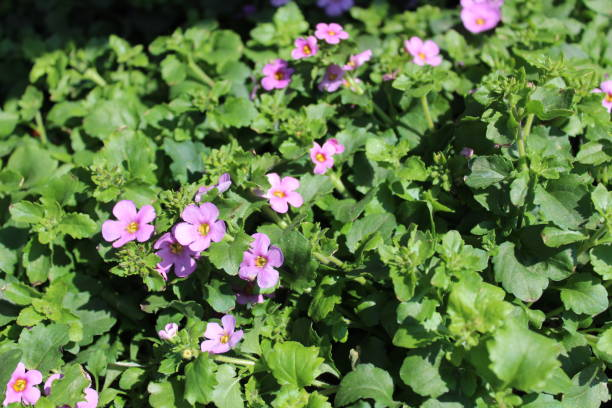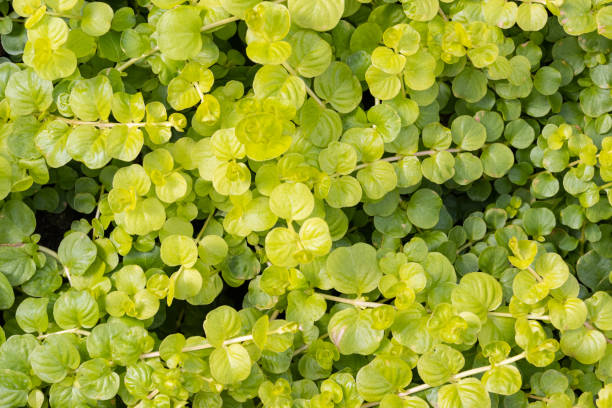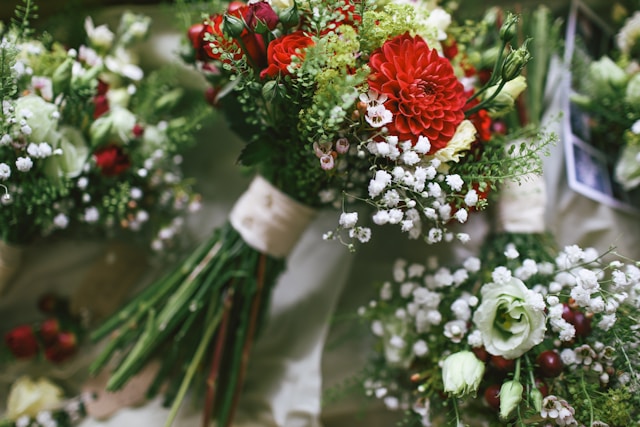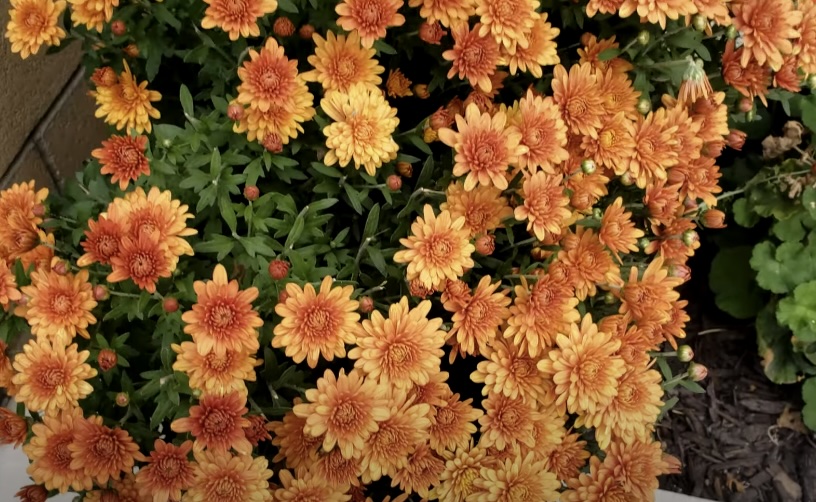Discover the beauty and utility of flowering ground cover plants in New Zealand. These vibrant and hardy varieties not only add a burst of color to your garden but also aid in weed suppression and soil conservation. In this detailed guide, we explore the top six flowering ground cover plants perfect for NZ conditions, complete with care tips, ideal planting spots, and common FAQs.
1. Bacopa (Sutera cordata)
Bacopa, scientifically known as Sutera cordata, is a popular flowering ground cover plant in New Zealand. Its trailing growth and profusion of blooms make it a sought-after choice for hanging baskets, garden walls, and ground cover. Bacopa is cherished for its ability to bloom continuously from spring through autumn, enhancing the beauty of any outdoor space.
Quick Facts
| Attribute | Details |
| Origin | South Africa |
| Flower Color | White, pink, blue |
| Sun Exposure | Full sun to partial shade |
Care Tips
Bacopa thrives in moist, well-drained soil and prefers full sun to partial shade. Here are some essential care tips to ensure its health and vitality:
- Watering: Keep the soil consistently moist to promote healthy growth and flowering. However, avoid overwatering, as it can lead to root rot.
- Feeding: During the growing season, after every four weeks, give Bacopa a balanced liquid fertilizer to help with its general growth and blooming. Choose a fertilizer specifically formulated for flowering plants and follow the manufacturer’s instructions for application.
- Pruning: After each bloom cycle, trim back the spent flowers and leggy growth to encourage denser branching and a more compact growth habit. Pruning also helps maintain the plant’s appearance and vigor. Use clean, sharp pruning shears to make precise cuts and minimize damage to the plant.
2. Creeping Thyme (Thymus serpyllum)
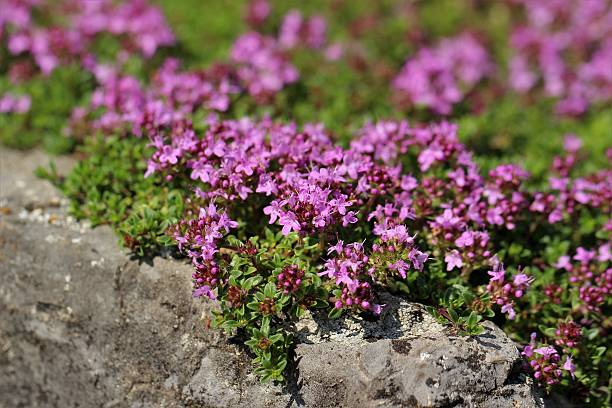
Creeping Thyme, scientifically known as Thymus serpyllum, is celebrated for its resilience and the delightful fragrance it emits when stepped on. This flowering ground cover plant is an excellent choice for pathways and rock gardens in New Zealand landscapes. Once established, it becomes drought-tolerant, making it well-suited for sunny and dry conditions.
Quick Facts
| Attribute | Details |
| Origin | Europe |
| Flower Color | Pink, purple |
| Sun Exposure | Full sun |
Care Tips
Creeping Thyme requires minimal maintenance but benefits from the following care:
- Watering: Water moderately, particularly during the establishment phase. Once established, reduce watering frequency, as Creeping Thyme is drought-tolerant.
- Feeding: Generally, Creeping Thyme does not require fertilization. However, it can benefit from a light sprinkle of organic compost in spring to enhance growth.
- Pruning: Light trimming helps maintain the plant’s compact appearance and encourages healthy growth. Trim back any leggy or overgrown branches as needed.
3. New Zealand Brass Buttons (Leptinella squalida)
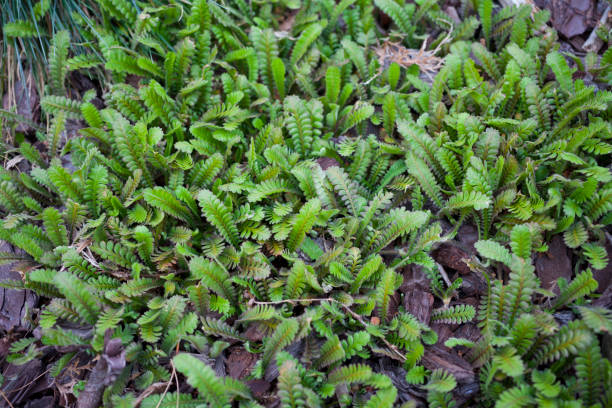
Native to New Zealand, Brass Buttons are charming flowering ground cover plants that add texture and whimsy to gardens. Their fern-like foliage and small, button-like flowers spread rapidly, forming a dense mat perfect for filling gaps or serving as a lawn alternative.
Quick Facts
| Attribute | Details |
| Origin | New Zealand |
| Flower Color | Yellow-green |
| Sun Exposure | Full sun to partial shade |
Care Tips
Brass Buttons thrive with minimal care, but here are some tips to ensure their health and vigor:
- Watering: Requires regular watering, especially during dry periods, to maintain moisture levels and promote growth.
- Feeding: Apply a general-purpose fertilizer once a year in spring to provide essential nutrients for healthy growth and flowering.
- Pruning: While pruning is not necessary, Brass Buttons can be mowed or trimmed to keep them tidy and prevent overgrowth. This can also encourage denser foliage and more prolific flowering.
4. Blue Star Creeper (Isotoma fluviatilis)
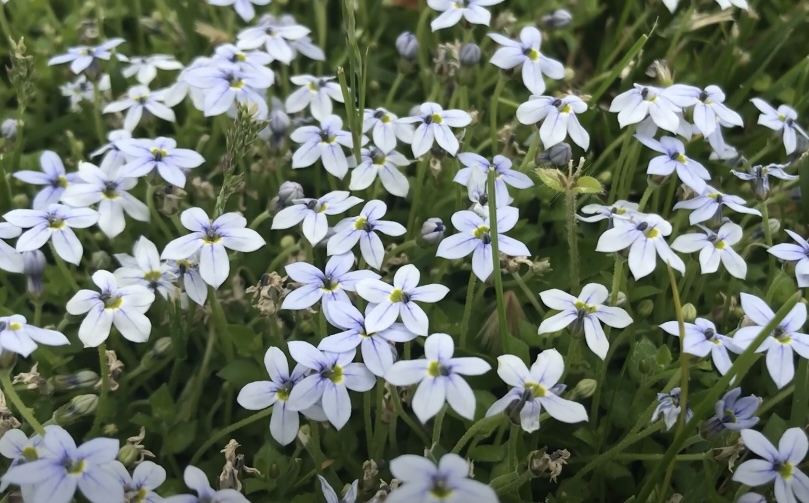
Blue Star Creeper, scientifically known as Isotoma fluviatilis, is a delightful flowering ground cover plant that forms a low, dense mat of green adorned with vibrant blue flowers. It serves as an excellent choice for softening the edges of pathways or filling the gaps between stepping stones in New Zealand gardens. With its tolerance to light foot traffic, Blue Star Creeper combines practicality with aesthetic appeal, making it a popular option among gardeners.
Quick Facts
| Attribute | Details |
| Origin | Australia |
| Flower Color | Sky blue |
| Sun Exposure | Full sun to partial shade |
Care Tips
Proper care ensures the health and beauty of Blue Star Creeper. Here are some essential tips:
- Watering: Maintain moist soil conditions to support healthy growth and flowering. However, keep the soil from being too wet, since this can cause root rot. Allow the soil to dry out a little bit in between waterings and water strongly but rarely.
- Feeding: Apply a light application of slow-release fertilizer in early spring to provide essential nutrients for robust growth and abundant flowering. Choose a fertilizer with balanced NPK (nitrogen, phosphorus, potassium) ratios suitable for flowering plants.
- Pruning: Blue Star Creeper requires minimal pruning. However, removing dead flowers promptly can stimulate new growth and prolong the flowering period. Use clean pruning shears to make precise cuts, ensuring the plant’s overall health and appearance.
5. Sedum (Sedum spp.)
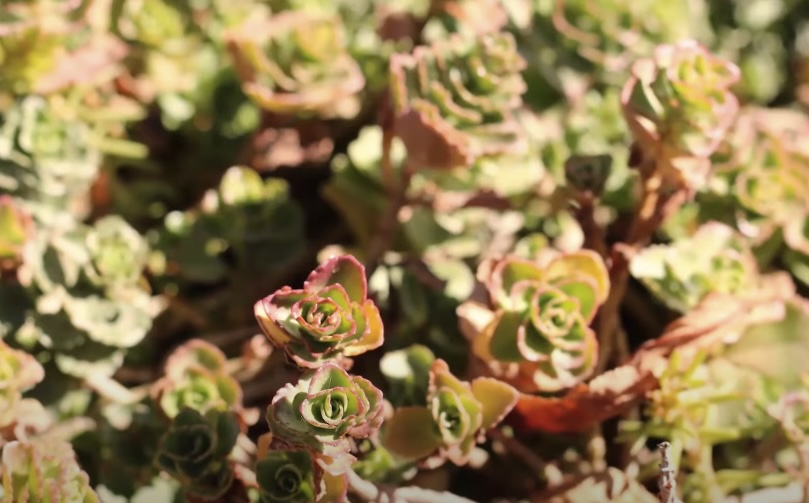
Sedum, commonly known as stonecrop, is a versatile and resilient flowering ground cover plant that thrives in NZ gardens. Its succulent leaves enable it to store water efficiently, making it exceptionally drought-tolerant and well-suited to the country’s varying climatic conditions. Sedum is admired for its late summer to autumn blooms, which come in a range of colors, including pink, red, and yellow, and attract beneficial pollinators such as bees and butterflies.
Quick Facts
| Attribute | Details |
| Origin | Northern Hemisphere |
| Flower Color | Pink, red, yellow |
| Sun Exposure | Full sun |
Care Tips
To ensure the health and vitality of Sedum, consider the following care tips:
- Watering: Sedum is drought-tolerant and requires minimal watering once established. Water sparingly, allowing the soil to dry out between waterings. Overwatering can lead to root rot and other moisture-related issues, so it’s essential to err on the side of underwatering rather than overwatering.
- Feeding: Provide Sedum with a balanced fertilizer once a year to support its growth and blooming. Choose a fertilizer specifically formulated for succulent plants or opt for a general-purpose fertilizer with balanced NPK ratios. Apply the fertilizer in early spring as new growth begins.
- Pruning: Deadhead spent blooms regularly to encourage continuous flowering and maintain the plant’s appearance. Additionally, trim back any leggy or overgrown stems in autumn to promote a tidy growth habit and prevent overcrowding.
6. Ajuga (Ajuga reptans)
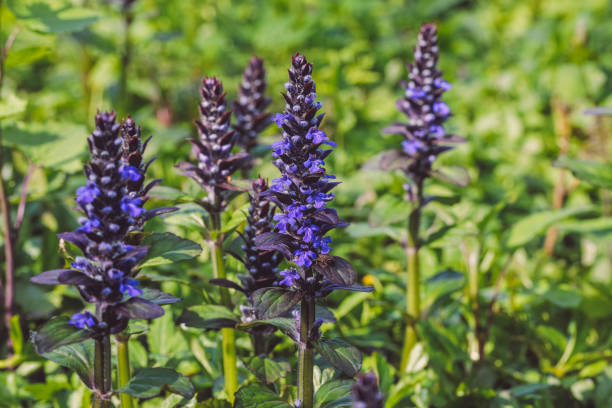
Ajuga, also known as bugleweed, is a robust flowering ground cover plant originating from Europe. Its adaptability and striking appearance make it particularly well-suited for New Zealand gardens. With dense, carpet-like foliage and vibrant blue to violet flowers, Ajuga adds visual interest to low-maintenance areas, under trees, or as a turf alternative.
Quick Facts
| Attribute | Details |
| Origin | Europe |
| Flower Color | Blue, violet, occasionally white |
| Sun Exposure | Full sun to partial shade |
Care Tips
To ensure the health and beauty of Ajuga, follow these care tips:
- Watering: Ajuga thrives in consistently moist soil. Water regularly to keep the soil evenly moist, especially during dry periods. However, avoid overwatering, as soggy conditions can lead to root rot and other moisture-related issues.
- Feeding: Feed Ajuga with a general-purpose garden fertilizer in early spring to promote healthy growth and flowering. Choose a fertilizer with balanced NPK ratios and follow the manufacturer’s instructions for application. Avoid over-fertilizing, as excessive nutrients can lead to lush foliage at the expense of flowers.
- Pruning: While Ajuga typically requires little pruning, occasional thinning may be necessary to prevent overcrowding and maintain plant health. Remove any dead or damaged foliage as needed to improve air circulation and reduce the risk of fungal diseases. Avoid heavy pruning, as Ajuga’s dense growth habit naturally suppresses weed growth and minimizes maintenance requirements.
Conclusion
Flowering ground cover plants in NZ not only enhance the beauty of your garden but also contribute to its biodiversity by providing habitats and food sources for wildlife. Whether you’re looking to cover large areas, edge pathways, or create a colorful, low-maintenance carpet, these top picks offer something for every gardener.
FAQ
Flowering ground cover plants in NZ thrive in well-drained soil with adequate sunlight. The specific light requirements can vary from full sun to partial shade depending on the plant.
The watering needs vary among different species. Most require regular watering until they are established. Drought-tolerant varieties like Sedum and Creeping Thyme need less frequent watering.
Many ground cover plants, like Creeping Thyme and Sedum, are frost-tolerant. However, plants like Bacopa may need protection or mulching in frost-prone areas.
It’s important to choose plants suited to your local conditions and consider their growth habits. Consult local gardening experts or resources for advice on plants that may become invasive in your area.
